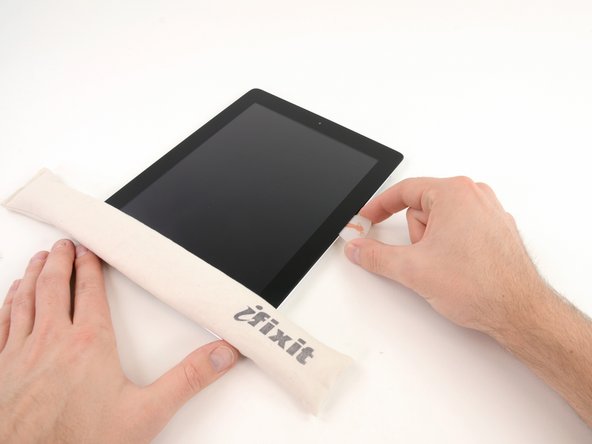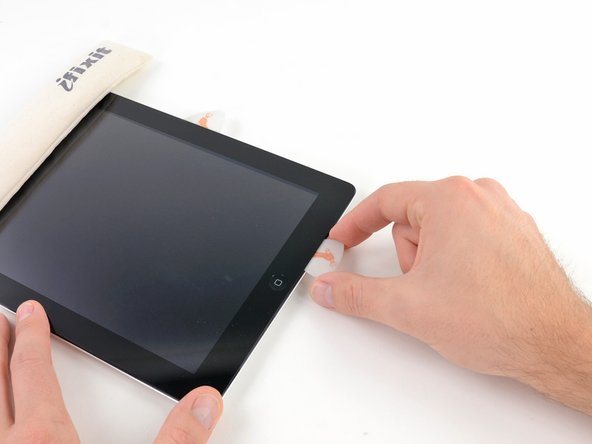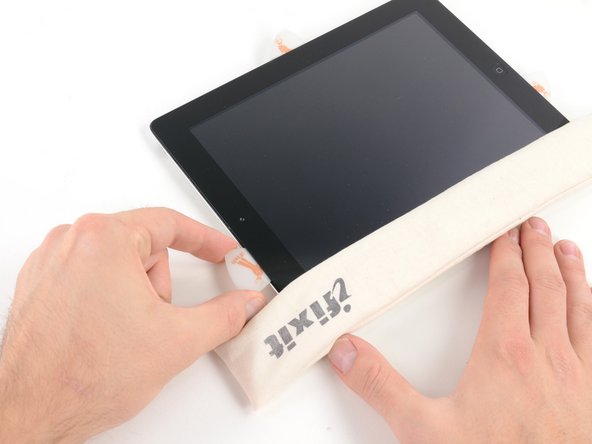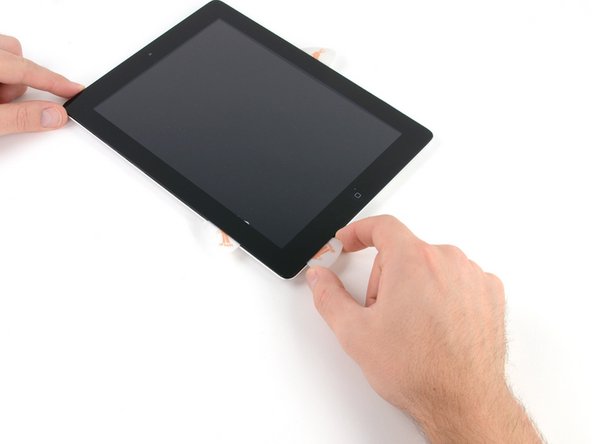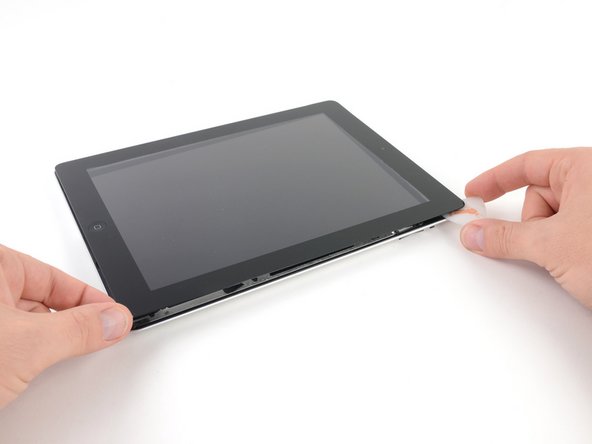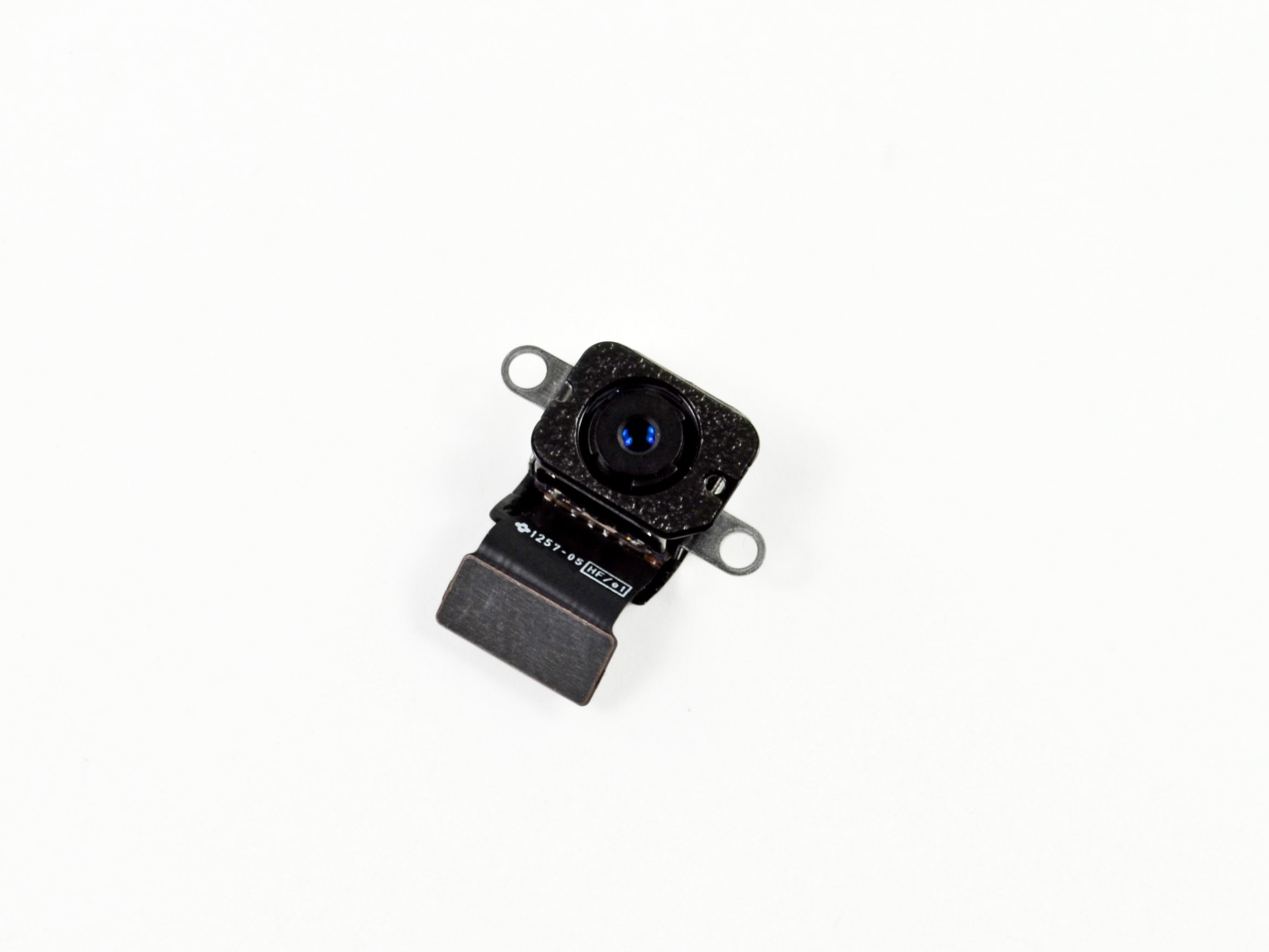iPad 4 GSM Lightning Connector Replacement
Duration: 45 minutes
Steps: 47 Steps
Follow this guide to swap out your Lightning connector like a pro.
Step 1
For carousel microwaves: Ensure the plate spins freely. If your iOpener is having trouble spinning, it could overheat and cause some serious burn issues. Keep it moving to keep it cool!
Before diving in, give your microwave a quick clean. You don’t want any stubborn crumbs or spills getting stuck to your iOpener during the repair.
- Pop the iOpener right in the microwave, aiming for the center spot.
Tools Used
Step 2
Keep an eye on the iOpener’s temperature – overheating is a no-go. Don’t let it get hotter than 100˚C (212˚F), or it might get a bit too dramatic and burst on you.
If the iOpener looks puffed up, give it some space – definitely don’t touch it.
If the iOpener’s still a bit too warm to handle in the middle, just wait a bit for it to cool down before reheating. A good iOpener will stay nice and warm for about 10 minutes.
Microwave power can vary, so cooking times might need a little tweak. You'll know the iOpener is ready when it's just a smidge too hot to keep your fingers on it comfortably.
- Give the iOpener a quick 30-second heat-up in the microwave.
- As you work through the repair, if the iOpener starts cooling down, just pop it back in the microwave for another 30 seconds. Easy fix, no need to rush!
Tools Used
Step 3
Heads up! The iOpener gets seriously hot, so handle with care. If you’re feeling cautious, slipping on an oven mitt is a smart move.
- Carefully take the iOpener out of the microwave, holding it by one of the flat ends. The center will be hot, so be mindful and avoid touching it directly.
Tools Used
Step 4
Heads up! That iOpener gets seriously toasty, so make sure to grab it only by the cool end tabs.
Don't have a microwave? No worries! Just pop your iOpener into a pot of boiling water to get it nice and toasty.
- Grab a pot or pan and fill it with enough water to fully dunk your iOpener.
- Heat the water until it's boiling, then turn off the heat.
- Gently place your iOpener into the hot water and let it soak for 2-3 minutes, making sure it's fully submerged.
- Use tongs to carefully pull the iOpener out of the hot water. It's going to be hot, so be careful!
- Give the iOpener a good dry with a towel to get rid of any excess moisture.
- All set! Your iOpener is now ready to go. If you need to reheat it, just bring the water to a boil again, turn off the heat, and let it soak for another 2-3 minutes.
Tools Used
Step 5
Pop on some safety glasses to keep your eyes safe, and handle that LCD screen like it’s the crown jewel—no accidental damage!
This helps keep those sneaky glass shards in check and adds some solid support while you pry and lift the display.
- Got a cracked display? No worries! Start by taping up that glass to keep it from shattering all over the place. A little precaution goes a long way.
- Now, grab some clear packing tape and lay overlapping strips all over the iPad's screen, covering the entire surface. The more tape, the better!
- Follow the guide step-by-step, but be prepared: once the glass starts cracking, it might keep going as you work. You may need a metal prying tool to scoop the glass out carefully. If you need help, you can always schedule a repair.
Step 6
Heads up! Since you might be handling some shattered glass here, we highly suggest rocking some safety glasses to keep those sneaky shards out of your eyes.
- Place the iOpener flat along the right edge of your iPad, pressing down gently to make sure it’s snug against the surface.
- Give it about 90 seconds to work its magic before you try popping open the front panel.
Tools Used
Step 7
Getting the tip of your opening tool wedged between the glass and plastic might take a bit of muscle. Stay cool, be patient, and gently wiggle that tool back and forth until it slips right in.
- Spot a tiny little gap in the iPad's adhesive ring up in the upper right corner, about 2.0 inches (~5 cm) from the top. This is your golden opportunity!
- Get ready to align your tool with the mute button. Carefully slide the tip of a plastic opening tool into that gap between the front glass and the plastic bezel. Just insert the very tip, enough to give that crack a little nudge.
Step 8
- Place the tool carefully between the plastic display bezel and the front panel glass—this is the sweet spot. Take your time, and make sure it's lined up just right.
Step 9
- Gently wedge the tip of your plastic opening tool between the front glass and the plastic bezel. Now, take a plastic opening pick and slide it right alongside the tool, carefully working the gap. A little patience here goes a long way!
Step 10
- Take the plastic opening tool out of the iPad and gently slide the opening pick further underneath the front glass, aiming for a depth of about 0.5 inches. Take your time—patience here pays off!
Step 11
- While you're working on peeling off the adhesive from the right side of the iPad, give the iOpener another heat-up session, then pop it back on the bottom edge to keep things nice and warm. That way, everything will come apart like a charm!
Tools Used
Step 12
The adhesive is tough, so you might need to apply some muscle here. Just take your time and be gentle!
If you spot the tip of your opening pick sneaking out from under the front glass, gently pull it back just a bit. Don’t worry—using the pick this deep won’t cause any harm, but it might leave a bit of adhesive residue on the LCD.
- While the bottom edge is warming up with the iOpener, start peeling the adhesive away from the right edge of the iPad.
- Gently slide the opening pick down along the edge, releasing the adhesive as you go. Keep it steady and easy!
Tools Used
Step 13
You might need to slide the heated iOpener back onto the right edge of the iPad as you work through releasing the adhesive. How long the iPad has cooled down while you were working will decide if this move is necessary.
- If the opening pick gets stuck in the adhesive, try "rolling" it gently along the edge of the iPad to keep breaking through the glue and make progress.
Tools Used
Step 14
- Before you pull out that first opening pick from the bottom corner of your iPad, slide a second pick under the right edge of the front glass to keep that adhesive from sticking back together.
- Warm up the iOpener again, then move it over to the top edge of the iPad to keep things nice and pliable.
Tools Used
Step 15
The Wi-Fi antenna is nestled along the bottom right edge of the iPad’s rear case, held in place by screws and a cable. Since it’s positioned just so, take your time and handle it gently—one wrong move could cause permanent damage to the antenna. No worries though, just a little patience will get you through!
- Alright, it's time to take it slow and steady here.
- You’ll need to carefully peel away the adhesive holding the antenna to the front panel, but make sure not to damage the delicate parts connecting the antenna at the bottom of the iPad. Follow each step closely, and you'll do great!
Step 16
Keep the pick from sliding past the bottom right corner—going further could mess up the Wi-Fi antenna, and we definitely want to avoid that!
- Gently slide the opening pick along the bottom right corner of the iPad, carefully peeling back the adhesive there. Take it slow, and you'll be on your way to success!
Step 17
Be careful as you move the opening pick along the bottom right edge of the front panel. The Wi-Fi antenna is right around the corner, and it's super easy to damage it if the adhesive isn't handled just right. Take it slow and steady!
Keep the pick nestled just under the front glass—don't pull it all the way out! Leave about 1/8" (3 mm) of the tip tucked underneath to keep things steady.
- Gently slide the tip of your opening pick along the bottom edge of the iPad to loosen the adhesive holding down the Wi-Fi antenna. Easy does it!
Step 18
- After you’ve passed the Wi-Fi antenna (about 3" or 75 mm from the right edge, right by the home button), slide the opening pick all the way in.
- Gently slide the pick to the right to break the adhesive that’s holding the Wi-Fi antenna to the front glass.
- The antenna is screwed to the bottom of the iPad and connected with a cable. This step safely separates the antenna from the front panel so it won’t get damaged when you lift the panel off.
Step 19
Keep your iOpener chill—heat it for no more than a minute at a time, then give it a solid two-minute break before warming it up again.
If the adhesive has cooled too much along the bottom edge, just give your iOpener another quick heat-up to warm up the adhesive where you're working. Keep it cozy!
- Keep sliding that opening pick along the bottom edge of the iPad, carefully pulling it out enough to curve around the home button. Once you're past the home button, pop the pick back in about half an inch (10 mm) deep and keep going!
Tools Used
Step 20
On iPad 4 models, carefully insert the pick about 1/2 inch (10 mm) into this area. This helps avoid any potential damage to the home button ribbon cable. Take it slow and steady!
- Keep working that adhesive off the entire bottom edge of the iPad like a pro.
- Leave the opening pick tucked under the front glass near the home button to hold your spot.
Step 21
- Pop the iOpener back in the microwave for a quick heat-up, then place it on the left edge of the iPad to gently warm up the adhesive in that area.
Tools Used
Step 22
If the adhesive has cooled down too much, no worries! Just replace the iOpener along the top edge and keep going. If the iOpener isn't hot enough, simply reheat it and get back to work.
- Gently slide the opening pick along the top edge of the iPad, easing it out just enough to get around the front-facing camera bracket.
- Heads up: the adhesive here is seriously stubborn, so you might need to apply a bit of muscle. Take it slow and steady to avoid any slips or scratches on you or your iPad.
- If the pick starts to get stuck in the adhesive, try "rolling" it as demonstrated in step 9 to keep things moving smoothly.
Tools Used
Step 23
Once the adhesive feels nicely warmed up, go ahead and take the iOpener off the iPad to make things easier. But if the glue is still being stubborn and sticky, just heat up the iOpener again and rest it on the left edge while you keep working.
- Keep peeling the adhesive off the top edge of the iPad, and gently slide your opening pick around the top left corner like a pro.
Tools Used
Step 24
The digitizer cable hangs out about 2" (50 mm) up from the bottom edge of your iPad. When sliding your pick, chill and stop once you hit around 2.25" (60 mm) from the bottom—no need to go any further!
- Gently slide your opening pick along the left edge of the iPad to loosen the adhesive bit by bit. Heads up: the adhesive here is pretty thin because of the digitizer running the whole left side. Keep your pick shallow—no deeper than about 10 mm (half an inch)—to avoid any accidental digitizer drama.
Step 25
The digitizer cable is pretty close to the bottom of the iPad, just about 1 inch (25 mm). Take your time here and go slow—this is a delicate part, and you don't want to accidentally snip that cable!
- With your opening pick still tucked under the bottom edge of the iPad, gently work your way to the bottom left corner to loosen the adhesive. Take your time and let it pop free – you're doing great!
Step 26
It looks like some of the adhesive around the iPad's edge might have decided to stick back down. No worries! Just slide a pick under the edge where the front glass is still holding on, and gently 'cut' through that adhesive to separate it. Keep it smooth and steady!
- Grab one of those trusty opening picks and gently wedge it under the bottom right corner of your iPad, then lift it up and hold on tight with your fingers.
Step 27
Watch out for any leftover adhesive that might still be hanging on! Grab your trusty opening pick and gently slice through any sticky spots that are still keeping that front panel in place.
- Grab your iPad by the top and bottom right corners, and gently rotate the front glass away from the device. Easy does it!
- When putting everything back together, take a moment to use a microfiber cloth and some compressed air to clear off any pesky dust or fingerprints from the LCD before you pop the glass back in place.
Step 28
That bottom left screw is playing hide and seek behind the home button ribbon cable connector. Gently nudge the home button ribbon cable out of the way so you can get to that sneaky screw and remove it.
- Take out the four 2 mm Phillips #00 screws holding the LCD to the aluminum frame. Nice and steady!
Step 29
Handle the LCD with care—its ribbon cable is delicate and might snap if you bend it too much.
- Grab a plastic opening tool or a spudger and gently lift the right edge of the LCD from the iPad. Take your time, no rush!
- Now, rotate the LCD carefully along its left edge and let it rest on top of the front glass panel. You're doing great!
Tools Used
Step 30
- Gently slide the tip of your trusty spudger under the tape to lift and peel it away from the LCD ribbon cable connector.
Tools Used
Step 31
- Lift up the little retaining flap on the LCD ribbon cable's ZIF connector—just a gentle flip will do.
- Carefully wiggle the LCD ribbon cable out of its socket on the logic board using your fingers or tweezers.
- If the LCD screen doesn’t light up after reconnecting the ZIF connector, try a quick reboot: hold down the power and home buttons together for about ten seconds until the Apple logo shows up.
Tools Used
Step 32
- Gently lift the LCD away from the front panel, making sure not to touch the screen directly. Easy does it!
Step 33
If you see any electrical tape hiding the Wi-Fi antenna, speaker cable, or home button ribbon cable, go ahead and peel it off to reveal those sneaky little connectors.
Step 34
- Gently lift the retaining flap on the home button ribbon cable ZIF connector.
Step 35
- Grab your trusty tweezers and gently pull the home button ribbon cable straight out of its cozy socket on the logic board. Easy does it!
Tools Used
Step 36
- Gently lift and slide the home button ribbon cable out of its snug spot in the back case.
Step 37
- Gently use the tip of your trusty spudger to lift the tape holding the digitizer ribbon cable onto the logic board — slow and steady wins the race!
Tools Used
Step 38
- Gently lift the retaining flap on both of the digitizer ribbon cable ZIF connectors. Take your time—this part can be a little tricky, but you’ve got this!
Step 39
- Gently slide the flat end of your spudger under the digitizer ribbon cable to carefully break up the adhesive holding it down.
- Once loosened, pull the digitizer ribbon cable straight out from its connectors on the logic board with a steady hand.
Tools Used
Step 40
- Gently peel back the digitizer ribbon cable and grab your spudger. Use the flat end to carefully loosen the adhesive that's holding the cable in place against the rear aluminum case. Nice and easy!
Tools Used
Step 41
- Gently use your fingers to slide the digitizer ribbon cable out from its snug spot in the aluminum frame.
- Carefully lift the front panel away from the iPad.
Step 42
If you spot some electrical tape hiding the Lightning connector cable, go ahead and peel it off gently.
Step 43
- Gently wiggle the flat end of your spudger to lift the plastic spacer away from the rear case.
- Carefully take the plastic spacer off the iPad and set it aside.
Tools Used
Step 44
- Unscrew the two 2.9 mm Phillips #00 screws holding the Lightning connector to the rear case—time to show those screws who's boss!
Step 45
- Gently use the flat end of your spudger to lift the Lightning connector cable up and out of its slot on the logic board. Take your time and make sure you're being gentle – it doesn’t need much force.
Tools Used
Step 46
- Carefully slide the flat end of a spudger under the Lightning connector cable and lift it up from the aluminum frame with a gentle touch.
Tools Used
Step 47
- Gently pull the Lightning connector straight out from its cozy spot in the rear case. It should come out without a hitch, but don’t rush it—take your time!
























